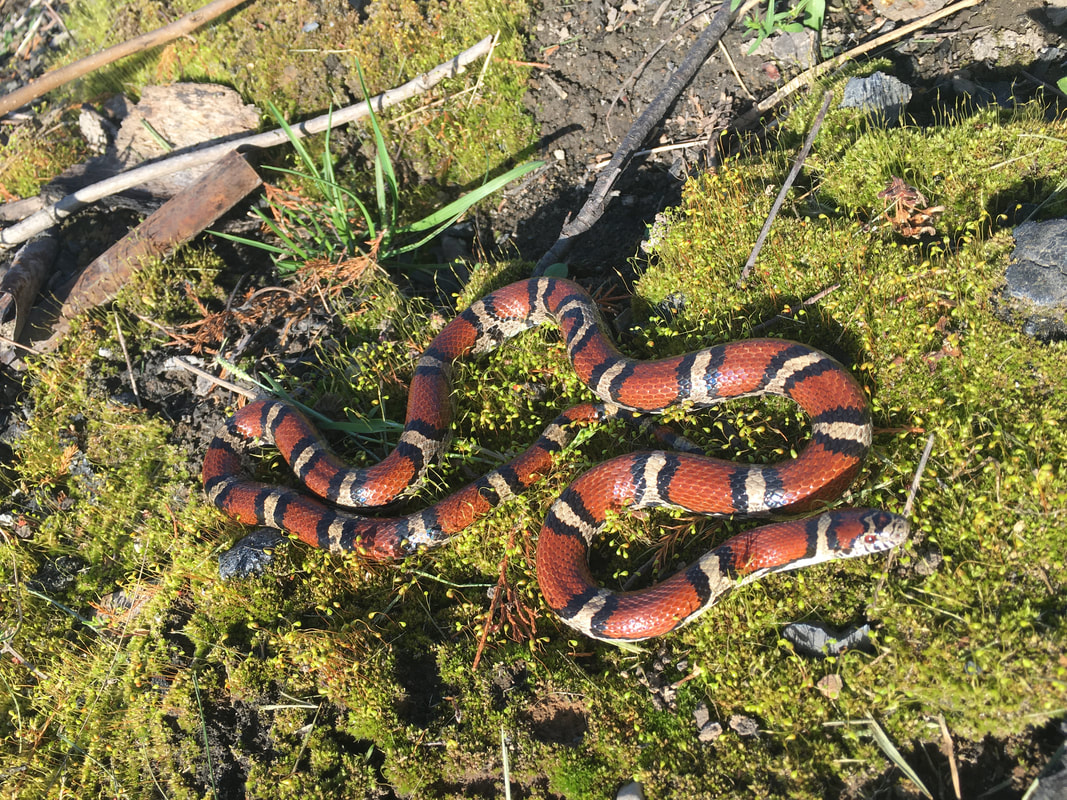EASTERN RED MILKSNAKE
Lampropeltis triangulum
Constrictor- Nonvenomous
This is one of the smaller species of the kingsnake genus, as adults in the wild they average 21-28 inches. This is considered one of the most beautifully colored snakes in the Midwest. The general body color is white, yellow, or light tan, with red or orange blotches bordered with black. The belly is white and strongly checked with black.
The red milksnake is secretive and seldom seen in the open. They live in glades, forested regions and can be found in open prairies. In their distribution, milk snakes often live on rocky slopes, under dead logs and tree litter.
The eastern red milksnake, like other kingsnakes, feeds on lizards, small snakes, and small mice, killing its prey by constriction.
The milksnakes were so named for the myth that they had the ability to nurse milk from cows. Many snakes do enter barns in search of mice, but milk is not a natural food for any reptile. The red milksnake often is misidentified as a coralsnake, which is not found in Missouri.
This is one of the smaller species of the kingsnake genus, as adults in the wild they average 21-28 inches. This is considered one of the most beautifully colored snakes in the Midwest. The general body color is white, yellow, or light tan, with red or orange blotches bordered with black. The belly is white and strongly checked with black.
The red milksnake is secretive and seldom seen in the open. They live in glades, forested regions and can be found in open prairies. In their distribution, milk snakes often live on rocky slopes, under dead logs and tree litter.
The eastern red milksnake, like other kingsnakes, feeds on lizards, small snakes, and small mice, killing its prey by constriction.
The milksnakes were so named for the myth that they had the ability to nurse milk from cows. Many snakes do enter barns in search of mice, but milk is not a natural food for any reptile. The red milksnake often is misidentified as a coralsnake, which is not found in Missouri.

